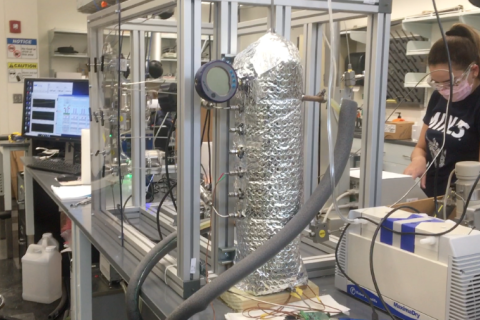
In April 2019, the Permian Basin became the highest producing field in the world—pumping about 4.2 million barrels per day. Production in the shale play continues to grow thanks to cost-saving advances in shale drilling technologies.
To study the impact of the Permian’s continued production growth, Hastings Equity Partners commissioned a whitepaper in partnership with the University of Houston Energy Research titled “Opportunities and Challenges in the Permian.”
“We wanted to understand the takeaway capacity of the Permian and where the incremental oil will end up,” Ted Patton, founder and managing partner of Hastings Equity Partners told Hart Energy.
“Clearly, the Permian Basin has defined our students’ careers in the industry. So the research was largely driven by the motivation to create awareness among faculty on educating the students on the Permian,” said Dr. Ramanan Krishnamoorti, chief energy officer at the University of Houston and co-author of the research.
The report disclosed a few unanticipated findings including the industry consolidation in the Permian Basin and the transportation challenges.
RELATED:
- Permian Well Spacing: Finding The Right Balance
- The Permian Catches Up
- Hart Energy's Unconventional Activity Tracker
Industry Consolidation
Major operators are estimated to produce more than half of the oil in the Permian Basin over the next four years, representing “a historic shift in economic power”, according to the study. As Patton pointed out, oil majors such as Exxon Mobil and Chevron have designed aggressive strategies to consolidate production, resources and supply chains that will meet majority of the domestic needs.
Consolidation by majors and increased pressure on the independents will lead to the gradual erosion and ultimate destruction of enterprise value among many oilfield services companies due to the lack of pricing power, said Krishnamoorti.
If major operators continue acquiring acreage in the Permian Basin, as well as ownership stakes in the pipelines, downstream refineries and petrochemical facilities, independent producers who traditionally sell to the majors, will need to market internationally and export overseas, according to the findings of the study.
“The Permian Basin used to be a place where wildcatters reigned and now, with technology, the economy is being driven by manufacturing,” Patton said.
He added that independents are facing new limitations from the investment community to limit production volume to what can be achieved with cash on hand. At the same time, both Exxon Mobil and Chevron have each announced plans to produce one million barrels per day. The inevitable result will be mergers by independents in an effort to survive, he said.
Bottlenecks
The study also revealed that although more than $90 billion is currently invested in construction projects for terminals, LNG, refining and petrochemical facilities along the Texas and Louisiana Coast, with another $200 billion planned for the next decade, construction can’t keep pace with the supply of oil coming out of the Permian Basin, said Krishnamoorti.
“The majority of the recent incremental capacity is and will continue to be directed at the Port of Corpus Christi,” he said.
The research also recognized the need to address sustainability issues including natural gas flaring and water management. Moreover, the associated gas cannot be appropriately valorized because of the absence of gathering and transportation pipelines and the reluctance of operators to invest significantly in gas infrastructure when the resource plays have rapid decline rates such as those seen in the Permian. Additionally, the technology to reinject the gas into the formation has not been fully developed to make it a viable option to handle the associated gas.
According to the findings of the study, another bottleneck facing the Permian over the coming years is the inability of Very Large Crude Carriers to navigate Gulf Coast waterways to refill for export. The demand for U.S. crude has highlighted the need for deep-water terminals off the coast of Freeport, Texas City, Corpus Christi, Brownsville and Louisiana. These projects have been proposed, but permitting and execution permissions will delay progress, thereby creating additional bottlenecks.
Recommended Reading
Defeating the ‘Four Horsemen’ of Flow Assurance
2024-04-18 - Service companies combine processes and techniques to mitigate the impact of paraffin, asphaltenes, hydrates and scale on production—and keep the cash flowing.
Going with the Flow: Universities, Operators Team on Flow Assurance Research
2024-03-05 - From Icy Waterfloods to Gas Lift Slugs, operators and researchers at Texas Tech University and the Colorado School of Mines are finding ways to optimize flow assurance, reduce costs and improve wells.
2023-2025 Subsea Tieback Round-Up
2024-02-06 - Here's a look at subsea tieback projects across the globe. The first in a two-part series, this report highlights some of the subsea tiebacks scheduled to be online by 2025.



